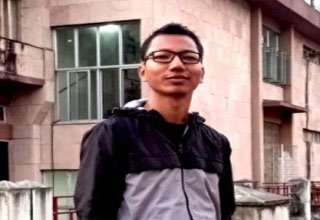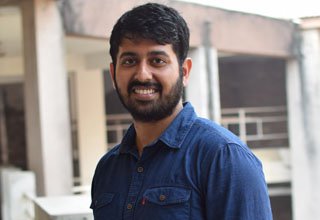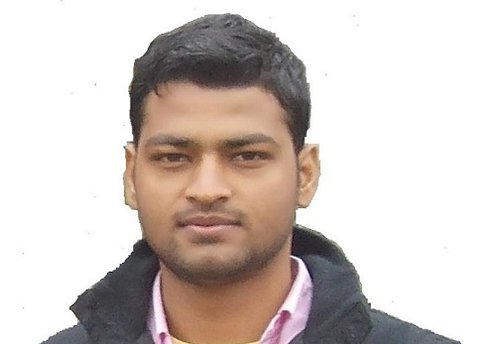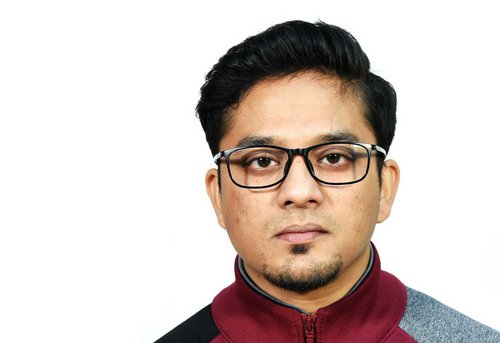Biomimetic Robotics & Artificial Intelligence Laboratory
Department Research Lab
Laboratory Incharge:
Shyamanta M. Hazarika
Contact Number:
9435084468
About Lab
BRAIL@IITG research in the area of Rehabilitation Robotics where our focus is on the development of neuroprostheses and intelligent assistive devices for robotic neurorehabilitation. Our research is driven by biomimetics i.e., examination of nature particularly human intelligence and skills, its models, systems, processes, and elements to emulate or take inspiration from these designs and processes. For development of prostheses and assistive devices within Rehabilitation Robotics we undertake biomimetic design, which is NOT JUST A COPY of the geometry! For us biomimetic design is biomimetic geometry together with functional biomimesis.
Visit our Lab Page here
Students
-
Hirakjyoti Basumatary (2024 batch alumnus)
-
Nilavjyoti Sarmah (2024 batch alumnus)
-
Masruddin Shaik (2024 batch alumnus)
-
Subhash Pratap (2024 batch alumnus)
-
Abhijit Dey (2026 batch alumnus)

Prosthetic hands have made a significant influence on the quality of life of people with upper arm amputation. However, the functionality of even the most sophisticated bionic hands does not match the biological human hand. A prosthetic hand requires a sense of reflex from the context of the grasped objects. Such a reflex, known as a bionic reflex is the emulation of the human grasp reflex in a prosthetic hand. The challenges in bionic reflex include slippage prevention of the grasped object. An intuitive reaction to slippage of grasped objects is to increase the grip force. Such an increase needs to be controlled so as not to induce any deformation. With the help of present-day robust control algorithms and sensor technology, it may be possible to achieve such a bionic reflex in a tendon-driven under-actuated prosthetic hand. The work undertaken as part of Ph.D. research is the emulation of bionic reflex control in a tendon-optimized 3D-printed under-actuated prosthetic hand. This is achieved through an adaptive slippage and deformation prevention controller based on detected stiffness.

The hand plays a crucial role in daily living activities. Loss of functionality of the hand due to stroke or other disabling diseases lead to inability to carry out activities of daily living. Hand rehabilitation devices play a significant role in recovering the lost functions of hand. A hybrid Brain Computer Interface (BCI) technology can be used by combining the signals from the brain and muscles to drive the hand exoskeleton. The signals from the brain and muscles collected in the form of electroencephelogram (EEG) and electromyogram (EMG) signals respectively are non-stationary. A robust adaptive controller can be developed to deal with the nonstationarity of signals. The work planned to be undertaken as part of PhD research is to design and develop a hand exoskeleton. A collaborative adaptive controller will be designed for the hybrid BCI i.e., EEG-EMG controlled based hand exoskeleton for neurorehabilitation.

Many living species such as birds, insects and fish use flapping wing technique to generate lift and thrust from millions of years. Especially birdshave outstanding manoeuvringabilities in a given space.The present study is focussed on investigatingthe aerodynamic performance of a biomimetic flapping wing, inspired from Passer Domesticus. The study is further extended to compare its performance with the conventionally opted ones.

The most challenging part of the neurorehabilitation is the functional recovery of the human hand. With the development of neurorehabilitation, physical rehabilitation strategies for the upper limbs include intensive intervention, task-oriented and bilateral training. Despite significant progress over the last couple of years in the design and development of robotic exoskeletons for extreme upper limb rehabilitation, there remain several challenges to be addressed, particularly for retention of residual skills and providing 'assistance-as-required' leading to newer problems in feedback and control. This is particularly acute in the area of somatosensory feedback to the user. The work to be undertaken as part of PhD research is to explore cross-modal haptic feedback for a neuro-rehabilitation using tactile and visual modality through advanced machine learning techniques. Haptic information would be used along with electromyogram (EMG), signals from the muscles and motor imagery electroencephalogram (EEG), signals from the motor cortex for control of an extreme upper-limb exoskeleton.

Losing an upper limb is a catastrophic event that hinders the closed-loop sensory feedback between the brain (motor control) and the hand (sensory feedback). The introduction of prostheses maximizes users' functionality and quality of life, but the absence of "haptic feedback" increases the dependency on visual input and limits the grasping abilities and dexterous manipulation in daily living activities (DLAs). This has been one of the primary reasons for rejection despite the significant advancements. Recently, there has been massive interest in providing sensory feedback from prosthetic hands to its users and enabling the user to participate in the formation of the control loop. The work to be undertaken as part of Ph.D. research is to explore the mechanisms underlying haptic perception through the stimulation of the peripheral nerves by designing a neuromorphic non-invasive hybrid tactile sensory feedback system for a bionic prosthetic hand.